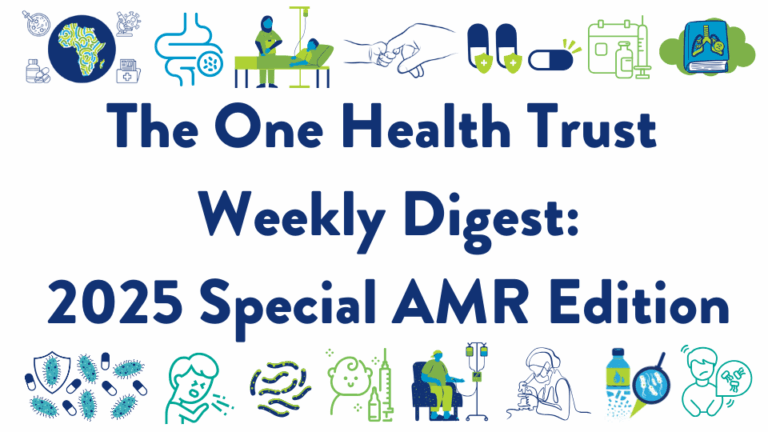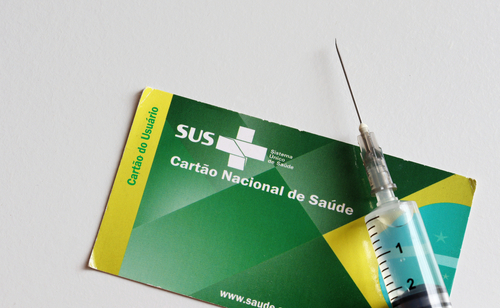October 03, 2018

New TB vaccine shows promise in multinational phase 2 trial. In a phase 2 clinical trial carried out in Kenya, South Africa, and Zambia, the new M72/AS01E tuberculosis vaccine, developed by GlaxoSmithKline, prevented progression to active pulmonary TB in 54 percent of adults infected with Mycobacterium tuberculosis. The trial was a randomized, double-blind, placebo-controlled design. A total of 1,786 participants received the vaccine and 1,787 received a placebo. Among the vaccinated group, 10 people developed laboratory confirmed active TB compared to 22 people in the placebo group. There were more reports of mild adverse events among the vaccine group compared to the placebo group within 30 days of injection; rates of serious adverse events and death were similar in both groups. [NEJM, NEJM Editorial]
Multidrug-resistant bacterial outbreak in humans is traced back to puppies from pet stores. In an eighteen state outbreak investigation of drug-resistant Campylobacter jejuni, health officials linked 118 human cases of diarrheal illness caused by Campylobacter infection to puppies from pet stores. Bacterial samples collected from infected persons and dogs were resistant to all antibiotics commonly prescribed for the treatment of Campylobacter infections. An epidemiological investigation of records collected from 20 pet stores for 154 puppies found that 95% had received at least one course of antibiotics. Fifty-five percent of dog treatments had been administered prophylactically. Twenty-nine (25%) of the human cases were pet store employees. [Scientific American, CDC]
Proposed carbapenem alternative ruled out as meropenem 30-day survival is 8.6 percent higher in clinical trial. Bloodstream infections caused by ceftriaxone-resistant Gram-negative bacilli are becoming more common, and effective alternatives to the standard treatment have yet to be found. In a clinical trial published in the Journal of the American Medical Association (JAMA), scientists were unable to show noninferiority of piperacillin-tazobactam versus meropenem in treating patients infected with Escherichia coli or Klebsiella pneumoniae in the blood. The 30-day mortality in patients treated with piperacillin-tazobactam group was 12.3 percent (23/187), compared to 3.7 percent (7/191) in the meropenem group. [JAMA, JAMA Comment, 2 Minute Medicine, Lab Online]
Venezuela’s decline constitutes a public health emergency. Ongoing unrest and economic decline in Venezuela has diminished access to food, medicines, and health services, resulting in increased spread of infectious diseases and rising mortality rates. The Pharmaceutical Federation of Venezuela estimates an overall national drug shortage of 80 to 85 percent while the Medical Federation estimates that one-third of the country’s physicians have left the country. An estimated 11.4 percent of children younger than 5 years suffer from moderate to severe acute malnutrition. In 2016, there was a 30 percent increase in infant mortality and a 65 percent increase in maternal mortality. The number of reported malaria cases increased from 136,402 in 2015 to 406,000 in 2017, and in 2018, more than 3,000 cases of measles were confirmed despite the World Health Organization confirming the country measles-free in 2016. [Center for Global Development]
Surging prices after drug shortages may cost the US $230 million annually. Researchers at the University of Pittsburgh analyzed price trends in the US for 90 medications before and after drug shortages. They found that drug prices, compared to the year before, increased by an average of 16 percent in the 11 months after a shortage compared to only 7.3 percent in the eleven months prior. Furthermore, stock outs cause delays in necessary treatment. Overall, drug shortages likely cause an estimated $230 million in additional healthcare costs each year. [Annals of Internal Medicine, Reuters]
Scientists modify a gene in mosquitoes to disrupt sexual development. Disrupting the function of a specific gene called doublesex instills sterility in female Anopheles gambiae, a mosquito that transmits malaria to humans. The passing on of this disrupted gene through successive generations successfully caused extinction under laboratory conditions. Researchers at Imperial College of London utilized a CRISPR–Cas9 gene drive targeting technique, and its success marks a significant advancement in the field. Previous gene drive techniques have failed to reduce fertility in mosquito populations because of their rapid rate of genetic mutation. [Nature Biotechnology, New York Times Health]
Despite progress, TB rate in India is falling too slowly to meet global targets. India is home to 27 percent of the world’s tuberculosis (TB) patients, according to the WHO Global Tuberculosis Report 2018. An estimated 35 percent of TB patients in India do not receive treatment, and more than 20 percent of the world’s drug-resistant TB cases occur in the country. In light of this high TB burden, India recently announced an ambitious plan to eliminate TB by 2025, five years ahead of the World Health Organization’s (WHO) global target of 2030. Financing for TB prevention, diagnosis, and treatment has tripled in India over recent years, and some indicators have improved, such as an 8% reduction in rifampicin-resistant and multidrug-resistant TB. Elimination, defined as fewer than 10 TB cases per 100,000 people per year, still appears out of reach; India’s TB incidence rate in 2017 was 204 cases per 100,000 people. India’s 1.7 percent reduction in TB cases is far short of the 10 percent required to meet the 2025 TB elimination target. [WHO, India Spend]
Indian Prime Minister launches world’s biggest healthcare program. A health insurance program, dubbed “Modicare” after its champion Prime Minister Narendra Modi, will provide US$6,800 worth of coverage to an estimated 100 million people. While the program may be a sincere attempt to reform India’s public health system which is plagued by a shortage of health facilities, medical staff, and affordable drugs, many of the Prime Minister’s critics argue that the scheme was launched to rally political support ahead of upcoming elections. Economists, for instance, point out that only US$ 2.7 billion have been allocated to the program each year but it would cost closer to $US 10.6 billion to deliver care to such a large population. [CNN, Reuters, The Guardian, The Independent]
EU experiencing large West Nile Virus outbreak. As of September 20, 2018, European Union (EU) member states have reported a total of 1,134 cases of West Nile virus in humans marking a three-fold increase on the prior three years, according to the European Centre for Disease Prevention and Control. Last week, 186 human cases were reported in Italy, Greece, Romania, Hungary, Croatia, Austria, Slovenia, and Bulgaria. A total of 25 deaths were also reported throughout Italy, Romania, and Croatia. Other cases have been reported in Israel, Serbia, and France. [European Centre for Disease Prevention and Control Weekly Update, The Local]
Ebola outbreak in DRC remains active as warfare threatens region. The Ebola virus disease (EVD) outbreak in the Democratic Republic of the Congo (DRC), which began in August 2018, remains active. Substantial progress has been made in Mangina, and an overall decreasing trend in weekly case incidence continues. However, the disease is still spreading in seven different health zones, and Beni and Butembo are becoming new hotspots, according to the World Health Organization. Five new cases have been confirmed since September 12 bringing the total EVD cases to 142 and deaths to 97. Three of the deaths were in healthcare workers. Rising risk and attacks on health workers threatens medical interventions. [WHO, BBC]
New finding may pave the way for improved Salmonella vaccine. While Salmonella vaccines currently exist, they are only 50% effective in preventing infection. Salmonella can be fatal in immunocompromised populations as well as in places where health access is poor. Researchers have recently discovered a difference between the abilities of circulating and non-circulating memory T-cells in providing immunity against Salmonella. In a study, circulating and non-circulating memory T-cells were transferred from previously vaccinated mice to naive mice, and the non-circulating memory T cells were found to provide optimal protection against Salmonella infection. This finding allows for the future development of a more effective Salmonella vaccine. [PNAS, UC Davis Blogs]
Life expectancy in US declines for the first time since 1993. In its annual health of the nation report, the US Centers for Disease Control and Prevention (CDC) reported that overall life expectancy at birth in the US decreased by 0.2 years between 2014 and 2015 and by 0.1 years between 2015 and 2016. In the decade prior, however, life expectancy rose overall from 77.8 to 78.6 years. In 2016, the top ten leading causes of death were heart disease, cancer, unintentional injuries, chronic lower respiratory diseases, stroke, Alzheimer’s disease, diabetes, influenza and pneumonia, kidney disease, and suicide. Age-adjusted death rates from heart disease and cancer, the top two causes of death in the past decade, declined 19 percent and 14 percent, respectively. Between 2006 and 2016, the age-adjusted death rate for drug overdose in the US increased 72 percent, from 11.5 to 19.8 deaths per 100,000 people. The majority of drug overdoses in 2016 were related to opioid deaths. [CDC Report, CDC Press Release]
Photo Credit: Jairo Alzate on Unsplash











